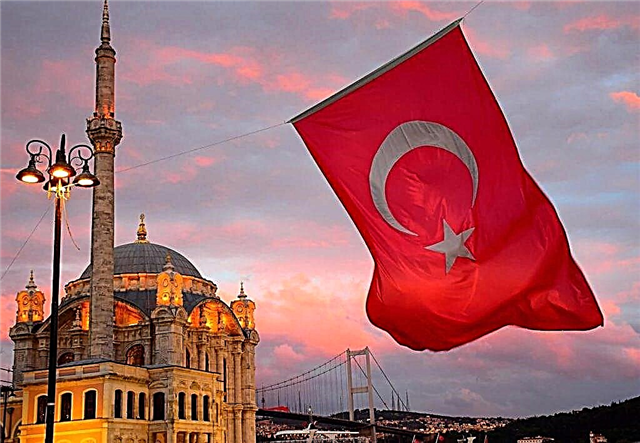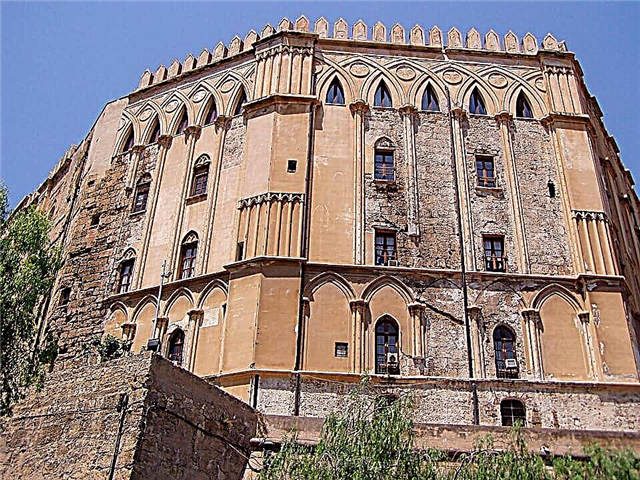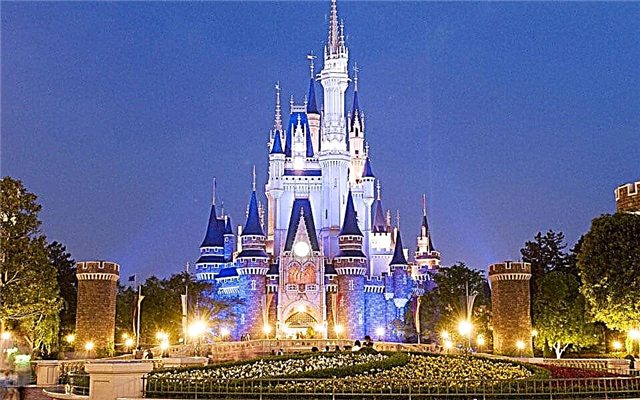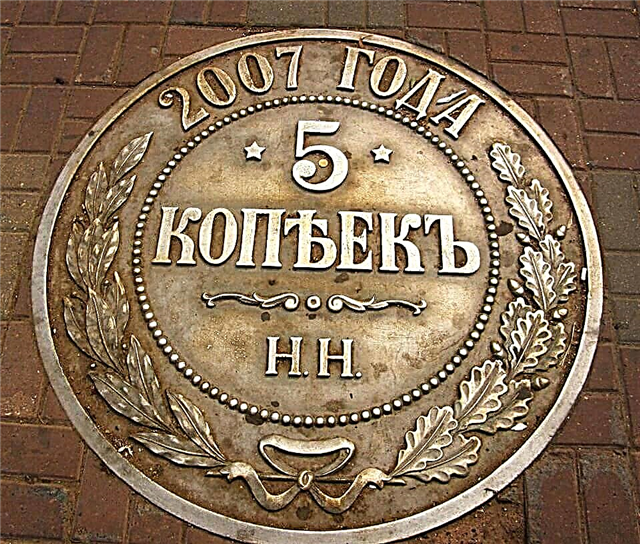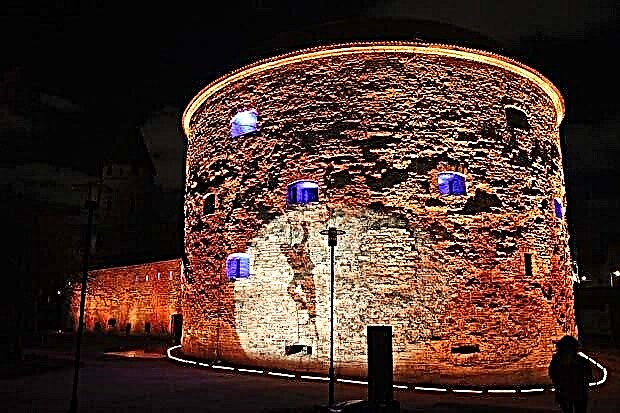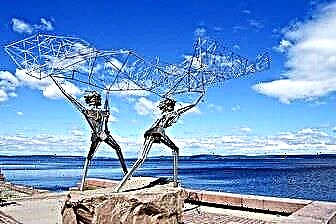The magnificent northern beauty of Karelia, the clear mirror-like surface of Lake Onega, unusual sculptures on the embankment brought from different countries, homemade wooden ships that have visited dozens of seas - all this can be seen in Petrozavodsk. This city can be called unique without exaggeration. Where else can you watch a theatrical performance in Karelian or take a ride on a hydrofoil?
In addition to city attractions, the incomparable "Kizhi", the stormy Kivach waterfall and countless rivers and lakes, as if entangled in a network of surroundings, await you. People come here from all over Russia for magnificent views, beautiful sunsets and harsh northern romance.

The best hotels and hotels at affordable prices.
from 500 rubles / day
What to see and where to go in Petrozavodsk?
The most interesting and beautiful places for walking. Photos and a short description.
Onega embankment
The area along Lake Onega, equipped and ennobled in 2003 in the style of the 19th century: paving stones, forged lanterns, rotunda gazebos and flower beds. Today this place is the real pride of Petrozavodsk, and all tourists first of all go here for a walk. The embankment is perfect for romantic dates, friendly meetings, meditation alone and calm contemplation of the water surface.

Monument "Fishermen"
"Fishermen" is a modern urban sculpture, installed on the Onega embankment in 1991 as a gift to Petrozavodsk from the American sister city of Duluth. The original art object was made by the sculptor R. Consuegra, thus laying the foundation for a whole gallery of monuments. This was followed by: "Wave of Friendship" from Finland, "Tubingen Panel" from Germany, "Wish Tree" from Sweden, "Sleeping Beauty" from France, "Meeting Place" from Norway and other sculptures.

Monument to Peter I
The monument was made according to the project of I. N. Schroeder and installed in the city in 1873. It is located in Petrovsky Square. The bronze sculpture depicts the first Russian emperor standing in a decisive pose and pointing with his hand somewhere into the distance. The sovereign is dressed in a military ceremonial uniform. The pedestal is made in the classic baroque tradition. The composition is in the center of a fenced flower bed.

Maritime Museum "Polar Odysseus"
Museum and Cultural Center, founded in 1978. The first exhibit was a wooden boat-boat "Polar Odyssey", on which members of the historical club sailed from Petrozavodsk to Kronstadt and returned back. Today, the collection includes more than 30 wooden ships that have been on expeditions to many seas and three oceans. Some of them took part in international competitions.

National Museum of the Republic of Karelia
The largest museum in Petrozavodsk, with extensive collections of various orientations - from natural science to ethnographic. They tell about nature, rich history, traditions of peoples inhabiting Karelia since ancient times and other historical aspects. The exposition was founded in 1871 on the initiative of GG Grigoriev, the governor of the Olonets province, the center of which was Petrozavodsk.

Museum of Fine Arts of Karelia
The city art gallery is geographically located in the center of Petrozavodsk in an 18th century mansion that has the status of an architectural monument. The museum was founded over 200 years ago. Today, its collection includes paintings of the 18th – 19th centuries, handicrafts of artisans, ancient Russian art, and works of Western European masters. The funds were replenished, including at the expense of the Tretyakov Gallery and the Hermitage.

Museum of Industrial History of Petrozavodsk
For the first time, an exposition dedicated to the development of industry in the region appeared in Petrozavodsk in 1838. At first, it was located on the territory of the Alexandrovsky Cannon Foundry, then moved to the Onega Tractor Plant. The museum operated until the 1990s, but was closed due to lack of funds. In 2003, it was decided to revive it, placing it on the same OTZ only in a different room.

Art Gallery "Doll House"
A private museum that opened in 1999. Its exposition is a collection of dolls of the city dweller Tatyana Kalinina, an artist and honored art worker of Karelia, who has been collecting samples for a long time. In addition to toys, here you can see tapestries, sculptures, graphic drawings, paintings. However, the exhibition is based on numerous dolls.

National Theater of Karelia
The only dramatic stage in the world where performances are staged in Finnish, Russian, Karelian and even Vepsian languages (of course, with simultaneous translation). The performances are held on small and large stages, designed for 50 and 300 seats, respectively. Throughout its history, the theater has changed its name as many as five times. The stage was founded by Finnish communists who moved to the Soviet Union in 1921.

Puppet Theater of the Republic of Karelia
The puppet scene was founded in 1935 by one of the first in the Soviet Union. Today, her repertoire includes more than 30 performances for spectators of all ages, but, nevertheless, the basis is made up of performances for children. Various types of puppets are used in different plays: finger, reed and tablet, which adds variety to the plot and attracts an additional audience.

Musical Theater of the Republic of Karelia
A ballet and opera stage, founded in the middle of the 20th century and housed in an imposing neoclassical building. In addition to classical musical forms, musicals, operettas and comedies are often staged here. The auditorium of the theater is designed for 600 people. Here you can listen to works by D. Verdi, P. Tchaikovsky, G. Puccini, J. Bizet and other recognized classics.

Railway station building
The station in Petrozavodsk was opened in 1955 as a branch of the October railway. The station building was erected according to the project of V.P. Tsipulin in the style of late neoclassicism. Similar forms were used for railway stations in many Soviet cities, all of them are to some extent similar to one another. The central structure of the building is a round tower with a high spire resting on a rectangular foundation.

Alexander Nevsky Cathedral
At present, it is the cathedral church of Petrozavodsk, built in 1832 as a factory church with donations from the workers of the Aleksandrovsky (Onega tractor) plant. The architect A. Postnikov worked on the project, and the engineer P. K. Maderni was in charge of the construction work. The building was built in a classical style with subtle baroque elements.

Church of the Presentation of the Lord
Orthodox church of the 18th century, located on the shores of the Logmozersky Strait. The church was built at the expense of the St. Petersburg merchant I. Ya. Kononov. Previously, there was a male abode at this place. In 1790, a major fire broke out here, as a result of which the building was completely burned down. Its recovery began four years later. In 1906, there was another fire and subsequent reconstruction.

Holy Cross Cathedral
The temple is located within the Zaretsky cemetery. It was erected in the middle of the 19th century on the site of an old building that had served parishioners since 1801. The money for the construction was donated by the townspeople, but, nevertheless, the main sponsor was the merchant and philanthropist M.P. Pimenov, who was the mayor of the city at that time.In the period 1930–80, the cathedral was one of two operating religious institutions in Petrozavodsk, while the rest were liquidated.

Governor's Park
Landscape park next to Lenin Square, which is adjacent to the building of the National Museum of the Republic of Karelia. It was created on the basis of a private provincial garden of the mid-19th century and an old park of the 18th century. The merger of the two territories took place in 1917. The place is notable for the fact that the oldest trees in Petrozavodsk grow here - three 200-year-old larches.

Botanical Garden of PetrSU
The garden was founded in 1951. It was laid down on the shores of Lake Onega in order to study and preserve the diversity of the flora. The plantings are located in the natural zone of the middle taiga - the limiting territory for the survival of many species, so the area is perfect for the acclimatization of plants. You can walk around the garden as in a normal park and admire its natural diversity.

Kivach waterfall
Water cascade on the Suna River, located about 80 km from Petrozavodsk and only 5 km away from the St. Petersburg - Murmansk highway. The height of the jets falling reaches 11 meters, which is a lot, given the landscape of the area. The natural landmark is included in the territory of the reserve of the same name, being one of its main objects. An arboretum and a Museum of Nature are located near the waterfall.

Lake Onega
Lake Onega is the largest freshwater reservoir in Europe after Ladoga Lake. It is located on the territory of Karelia, Leningrad and Vologda regions. The lake is clad in picturesque rocky shores, on which huge boulders are scattered, and is surrounded by impenetrable northern forests. Unique natural landscapes attract many tourists - lovers of eco-recreation.

Architectural ensemble "Kizhi"
The ensemble is located on the island of the same name, standing in the middle of Lake Onega. It consists of two wooden churches and a bell tower dating back to the 18th - 19th centuries. It also includes huts, chapels, and outbuildings of a later time. The complex is a valuable monument of wooden architecture, it is included in the UNESCO World Heritage List. You can get to the object on a special boat "Meteor", which, as part of the excursion, takes tourists across the lake for an hour and a half.



